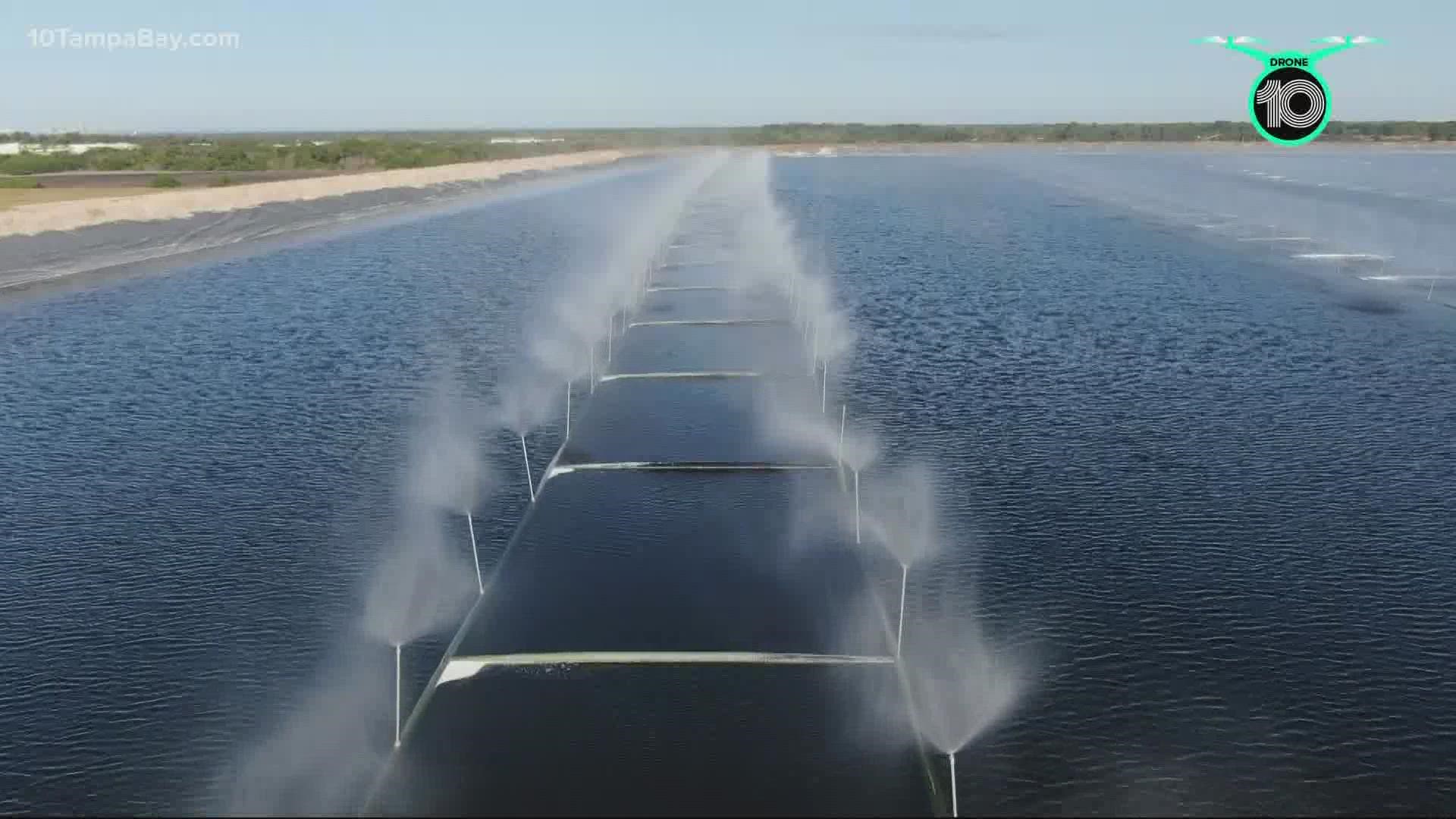MANATEE COUNTY, Fla. — For more than eight months, state and local leaders have been trying to find a way to shut down the former Piney Point phosphate mining facility once and for all.
After a partial tear in one of the facility's gypsum stacks in April caused more than 200 million gallons of untreated wastewater to be released into Tampa Bay, it became clear that a solution had to be found fast.
One of the many ways the state has decided to address the issue is treating the water that sits in the man-made reservoirs in order to store it inside a deep-injection well. Another way is by removing the polluted water, and that's where leaders have gotten creative.
Through the natural power of evaporation, officials tasked with closing Piney Point say they can remove hundreds of thousands of gallons of wastewater a day. According to Herbert Donica, the decision was made due to the limited window of time outside of Florida's rainy season.
In October, a judge named Donica the court-appointed receiver who would oversee Piney Point's closure. He says most of the efforts have gone to concentrating nutrients out of the water, but all that work is useless if rainfall causes the stacks to overflow.
That's why two different evaporation systems have been created to remove water from the stacks. One includes more than 800 spray heads spitting a mist of water into the air. The other is a drip that drops water onto the liner of the gypsum stack. Depending on the time of the year, the system can evaporate 200,000 gallons on a single day.
To put that into perspective, one inch of rain can create 3.6 million gallons of water in the gypsum stack.
"During the rainy season, we can gain 30 to 40 inches of water in the stacks. It rains in there and it doesn't come back out."
More than 260 million gallons of water remain in Piney Point's reservoirs, according to DEP.
Not all of it will be evaporated, but what's left will be sent 3,300 feet underground when the deep injection well is completed in 2023.

